Learn about the details and benefits of the chrome plating process on metal rollers
Introduction
Welcome to this comprehensive guide on roller design and manufacturing analysis – everything you want to know is here. Rollers play a key role across industries, providing support, guidance, plastic deformation and motion for machinery, equipment and products. Understanding the subtle differences in roller design and manufacturing is crucial to ensuring product applications have sound structure, appearance, performance, durability and safety.In this article, we will explore different aspects of roller design, material selection, manufacturing processes and quality control to reveal the intricacies of roller design and manufacturing – so you can find the answers to all your questions here. Let’s delve deep into the world of rollers together and uncover the mysteries within. Please feel free to ask if you have any other questions, I will do my best to provide explanations.
Key Considerations for Roller Design: Ensuring Optimal PerformanceTypes of
Rollers: Exploring the Various
OptionsIn daily applications, there are various types of rollers and roller-like structures, each designed for specific purposes. Here are some common types including:
Conveyor rollers
– Gravity rollers
– Tapered rollers
– Needle rollers
– Spherical rollers
– Forming rollers
– Heating/cooling rollers
– Measuring rollers
– Slitting rollers
– Straightening rollers
– Guide rollers – Drive rollers
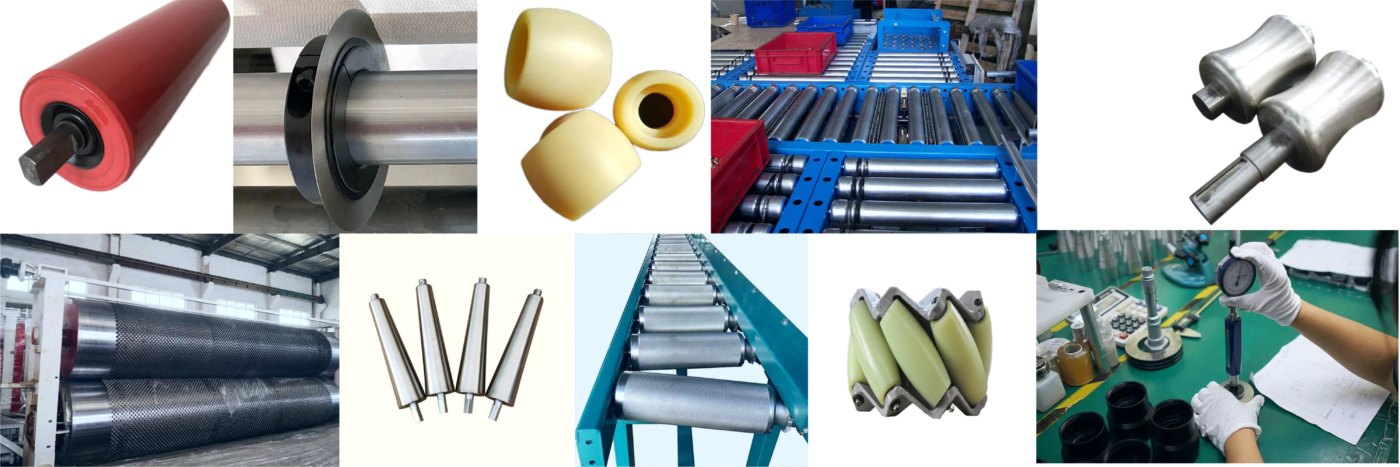
The choice of roller type depends on factors such as load capacity, speed, working environment, material properties, life requirements, cost considerations, and nature of the application. For example, conveyor rollers are designed to facilitate the movement of materials along a conveyor belt, while needle rollers are used in applications requiring high radial load capacities. Straightening rollers change the shape of materials, such as in I-beam rolling equipment, by using rollers of different dimensions.
Roller Functions: Breaking Through Imagination
Breaking through imagination, in mechanical motion, any component that rotates on an axle can be understood as a type of roller component. The bearings, wheels, needles, paint rollers, sweeping brushes, roller brushes, etc. that we often see are examples. In design, make more use of roller structures and their extended functions, making you an excellent creator to maximize their capabilities.
Material Selection: Choosing the Right
SubstrateChoosing the appropriate roller material is critical to ensuring performance, durability, and wear resistance. Common materials used in roller manufacturing include:- Steel: Steel and alloy steel rollers are widely used due to their excellent strength, durability, and load capacity. Surface treatments can provide even better hardness and wear resistance.- Stainless steel: Stainless steel or titanium alloy rollers have corrosion resistance, suitable for harsh environments or applications requiring high cleanliness like the food and chemical industries.- Aluminum alloys: Aluminum alloys offer metallic strength and durability while having the lower density attributes of plastics, often used where low inertia is required.- Polyurethane: Polyurethane rollers have excellent wear resistance and low noise properties, commonly used for material handling or high-speed operations like logistics and conveyor applications.When selecting materials, factors like load capacity, environmental requirements, temperature variations, and specific application needs must be considered.Learn more about materials here [insert materials link]. Learn more about roller materials [insert roller materials article link].
Roller Mechanical Structure: Perfect Fit Between Needs and Reality
There are numerous types of rollers, and their structures vary greatly. But in terms of their functions, they can be divided into the following component categories:
1. Roller body: The roller body is the main part of the roller, bearing the working load and rotation. Common materials are metal materials like cast iron and steel. Common shapes are cylindrical, conical, etc.
2. Neck: The neck connects the roller body and shaft, transmitting torque. The neck diameter is generally smaller than the roller body diameter. Its material should have sufficient strength and torsional stiffness.
3. Shaft: The shaft is the rotating part of the roller, connected to the drive device and supported by bearings to carry the weight and working load. The shaft should be centered to evenly transmit forces. Shaft materials are typically steel.
4. Bearings: Bearings allow the roller body to rotate relative to the shaft, bearing radial and axial forces. They require sufficient load capacity and service life. Common bearings are sliding bearings and rolling element bearings.
5. Seals: Seals prevent lubricant leakage from bearing clearances and can also exclude contaminants. Common seals are mechanical seals, oil seals, etc.
6. Drives: Drives provide torque to the roller, such as sprockets, gears, etc. They must match the roller speed and load requirements.
7. Supports: Supports carry the weight of the roller body and allow some movement like thermal expansion. Common supports are bearing housings, rubber mounts, etc.Good mechanical structure
Roller Geometry: Optimizing Functionality
The geometric shape of rollers has an important influence on their performance and functionality. Key geometric considerations include:
1. Diameter (outer contacting surface): The outer diameter of a roller impacts its load capacity and rotational speed. Larger diameter rollers typically have higher load capacity but may require more space. Smaller diameters often have high speed requirements along with low inertia and resistance.
2. Wall thickness: Most rollers are made from hollow tubing stock, with wall thickness generally dictated by standard tubing availability. Design considerations include cost, weight, and inertia.
3. Length: The length of a roller determines the contact area with the surface, affecting stability and support performance. Appropriate length improves roller quality and lifespan.
4. Taper: Tapered rollers are often used in applications requiring alignment, such as in conveyor systems. In demanding environments, stepped tapers may be required.
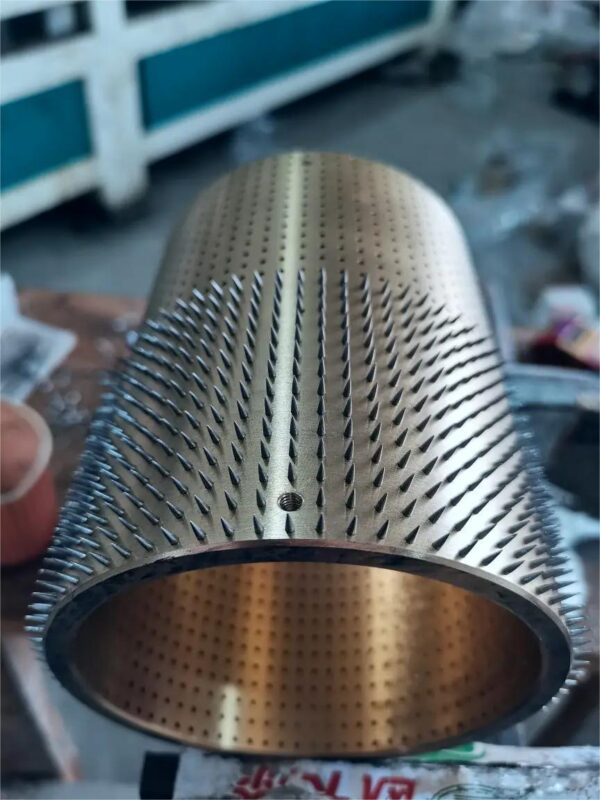
By carefully considering the geometry of rollers, engineers can optimize performance, reduce friction, and improve overall efficiency of machinery.
[Insert quote intake link]
Roller Manufacturing Process: From Raw Materials to Finished Rollers
Raw Material Preparation: Laying the Foundation
The manufacturing process of rollers starts with preparing the raw materials. For metal rollers, this involves selecting the required metal material (steel or other). The steel is then cut into appropriate lengths or shapes, prepared for further processing such as welding end caps, machining the required wall thickness, etc.For polyurethane rollers, the manufacturing process includes preparing the polyurethane material into the roller shape by mixing and casting into molds. Suitable standard tubing/sheets can also be selected for machining, allowing custom roller designs with specific properties and dimensions.Composite rollers generally have a metal inner core, with the polyurethane (nylon/PEEK/POM etc) covering the metal exterior as the contacting medium. This provides a metal inner drive surface along with flexible contact characteristics.Special material rollers typically refer to rollers used in special environments (high temperature, high speed, low friction, high corrosion). Examples are ceramic rollers and plasma sprayed rollers.
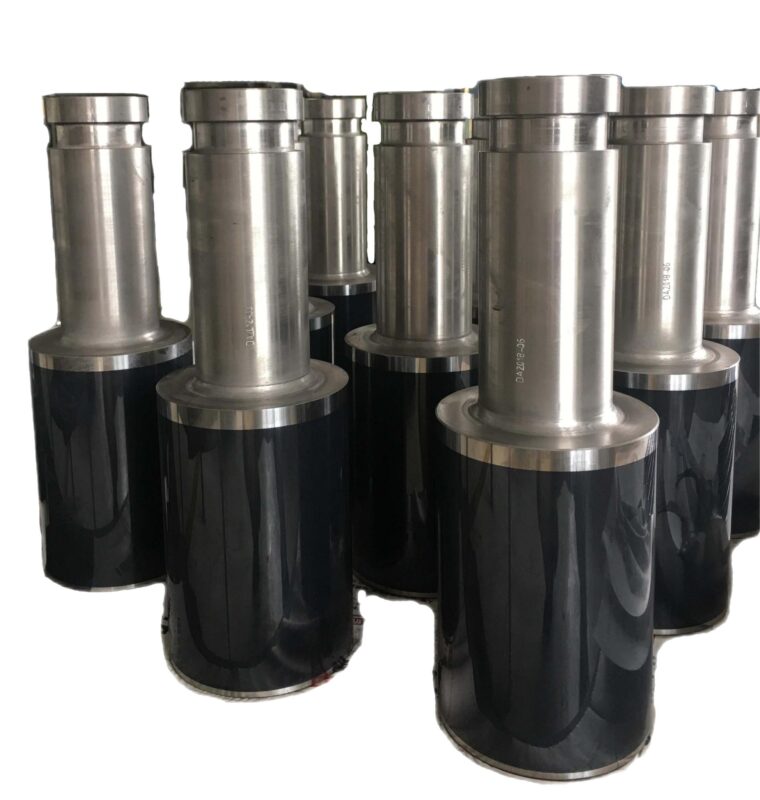
Roller Processing: Shaping and Finishing
Once the raw materials are prepared, the next step is to process the rollers into the required shape and dimensions. This process involves precise cutting, heat treatment, surface plating, ceramic spraying, grinding, and forming techniques to achieve the necessary size, hardness, and tolerances.For steel rollers, the processing may include turning, milling, and grinding. Polyurethane rollers are typically molded or cast into the final shape.Some key aspects of roller processing include:- Heat treating to increase hardness and wear resistance – Grinding and superfinishing for precision sizing and surface finish – Plating or coating for corrosion protection and friction control – Balancing to minimize vibration at high speeds – Stress relieving to prevent distortionProper processing is crucial to obtain the characteristics needed for optimal roller performance and service life. The methods utilized depend on the roller material, application requirements, production volume, and cost considerations.
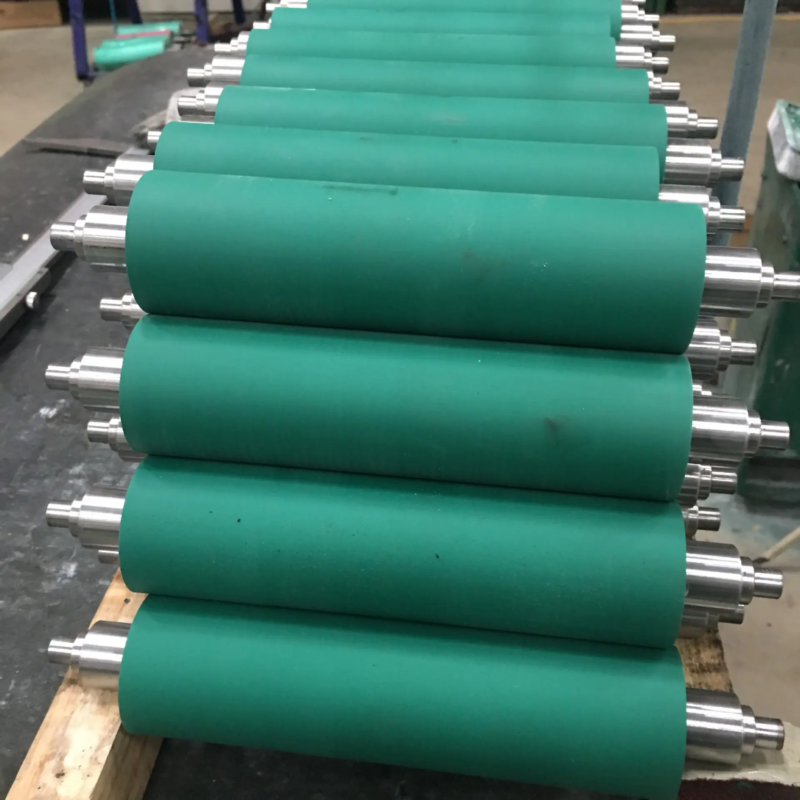
Surface Treatment: Improving Durability and Performance
Specifically for metal rollers, various surface treatment methods are used to improve the durability and mechanical performance of the rollers. These treatments provide additional hardness, smoothness, corrosion resistance, wear resistance, and degradation resistance. Common surface treatment techniques include:- Heat treatment: Heat treatment processes (such as quenching and tempering) can enhance the hardness and strength of steel rollers.- Plating: Chrome or ceramic platings can be applied to the roller surface to reduce friction and improve wear resistance.- Passivation: Stainless steel rollers are typically passivated to form a protective anti-corrosion layer.Surface treatments help extend roller service life, reduce maintenance requirements, and ensure optimal performance in harsh industrial environments.
To learn more about surface treatment processes, please click [link to article on surface treatments].
Quality Considerations: Ensuring Reliability and Safety
Testing and Inspection: Ensuring Compliance
To ensure the reliability and safety of rollers, strict testing and inspection procedures are implemented throughout the manufacturing process. These help identify any defects, dimensional discrepancies or material inconsistencies that could impact performance or reliability.Testing methods may include:
1.Dimensional inspection: Verifying roller dimensions against specified tolerances.
2.Dynamic balancing: Detecting mass and center of gravity inconsistencies in the roller at different speeds. Corrections through adding or removing weight are needed if data is out of spec.
3.Runout testing: Validating quality by detecting runout data at specific diameter circles.
4.Hardness testing: Determining roller hardness and compressive strength through Brinell or Rockwell hardness tests.
5.Material analysis: Ensuring used materials meet required specifications.
6.Load testing: Applying controlled loads on the roller to evaluate load capacity and deformation behavior.
By adhering to strict quality control standards, manufacturers can provide rollers that meet industry requirements and deliver consistent performance across applications.Higher quality rollers correspond to more stringent detection requirements.
We can provide more professional advice and suggestions on whether your roller requirements match the usage environment.
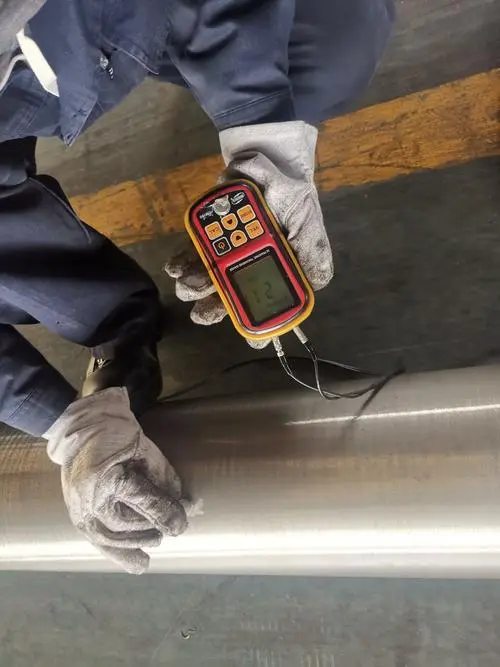
For more information, please contact [insert hyperlink to contact person].
Certification and Standards: Meeting Industry Requirements
Roller manufacturers often strive to obtain certifications and comply with industry standards to establish credibility and demonstrate product quality. Some common certifications and standards related to roller manufacturing include:
1.ISO 9001: Ensures implementation of quality management systems to continually deliver products that meet customer requirements.
2.RoHS: Restricts the use of certain hazardous substances in electrical and electronic equipment to ensure environmental and health safety.
3.ASTM International Standards: Provide guidance and standards for various materials, processes, and test methods used in roller manufacturing.
By selecting rollers from certified manufacturers and ensuring compliance with industry standards, companies can have confidence in the quality and reliability of the rollers obtained.
Frequently Asked Questions
Q: What are the key considerations when designing rollers for high speed applications?
A: Key factors when designing rollers for high speed applications include light-weighting, dynamic balancing, precision machining, and carefully selected materials. Additionally, optimizing the roller’s geometry and surface treatments can reduce vibration, lower friction, and improve overall performance.
Q: Are polyurethane rollers suitable for food processing applications?
A: Yes, polyurethane rollers are commonly used in food processing applications because they have anti-chemical corrosion, wear resistance, and corrosion resistance properties. They can be manufactured according to specific food grade requirements and maintained to sanitary standards. We can conduct third-party testing and certification in special cases.
Q: What is the typical delivery time for rollers?
A: For common materials and normal requirements, our production cycle is within two weeks. For special materials and highest quality requirements, please contact our sales team to arrange.
Q: Do you sell standard rollers?
A: We are a processing company that supports custom work and do not sell products that already have existing customers. Protecting customer intellectual property is something we consistently adhere to.
Q: How to extend the service life of conveyor rollers?
A: To extend conveyor roller service life, regular maintenance, proper lubrication, and cleaning are needed. Additionally, using durable roller materials and implementing effective sealing systems can help reduce wear and prolong service life.
Q: Does roller design impact energy efficiency in industrial applications?
A: Yes, roller design has significant impact on energy efficiency. By reducing friction, optimizing roller geometry, and using low friction materials, engineers can minimize energy losses and improve energy efficiency of industrial machinery.
Q: Are there specific safety considerations when using rollers?
A: Yes, safety considerations are critical when using rollers. Adequate safeguards, safety interlocks, and proper training of operators are vital to prevent accidents and ensure a safe working environment.
Q: Where can I find more information on roller design and manufacturing?
A: More information on roller design and manufacturing can be found on reliable websites. You can also contact our professional engineering team.
Contact us
The design and manufacturing details analysis of rollers reveals the complexity of roller design and manufacturing. By understanding design considerations, material selection, manufacturing processes, and quality control for rollers, companies can ensure performance, reliability and safety of rollers in various industrial applications. From conveyor systems to mechanical guides, rollers are key components enabling efficient smooth operation across industries. With this comprehensive knowledge, you can confidently make informed decisions when selecting and using rollers for specific applications.